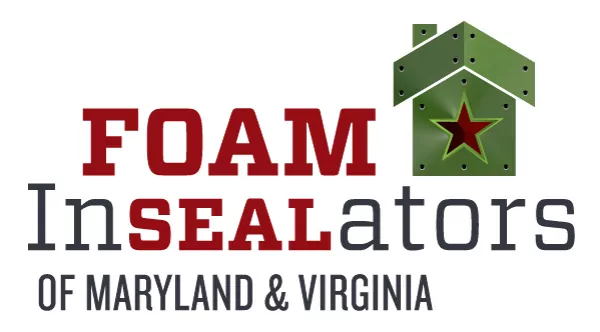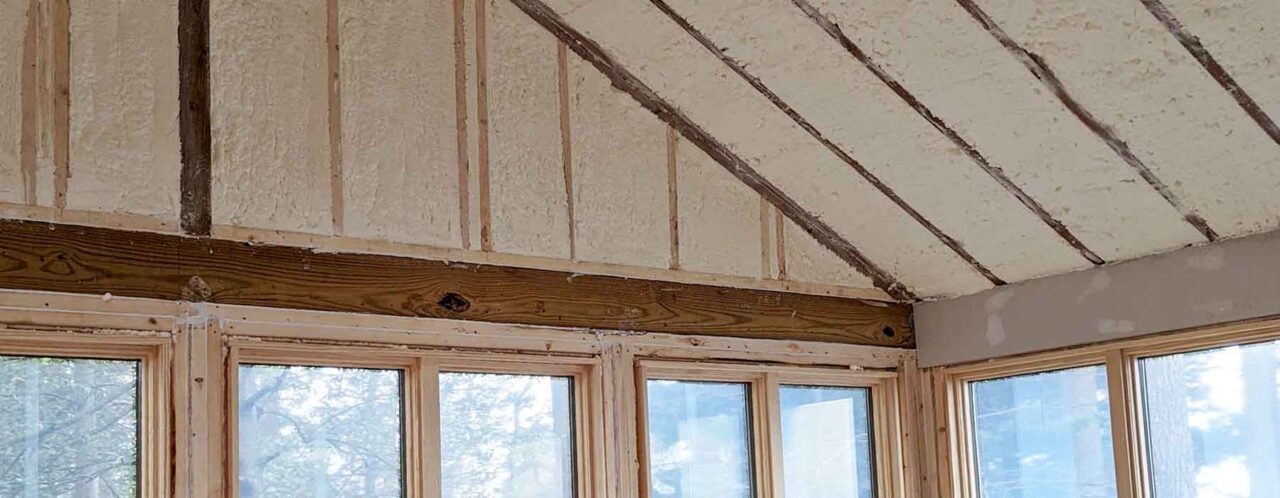Building a new home can be fun and stressful. Beyond picking the right floors, fixtures, and paint colors, the key to achieving home comfort and cost savings lies with what’s behind the drywall. To create a home that feels great in every season and keeps your energy bills low, high efficiency insulation and proper air sealing are essential.
Enduring our sweltering summers and freezing winters here in Maryland and Virginia can be difficult without a comfortable home. You need a well-sealed and insulated home to keep outside air from finding a way in and your hard-earned money from leaking out. The good news is that reducing your home’s air leaks is one of the most affordable ways to save energy, increase durability, and keep your indoor air healthy.
In this post, we’ll explain why energy-efficient home features like insulation and air sealing are must-haves in new construction. You’ll learn how they work together, how to talk to your builder about them, and what kind of benefits you can expect for years to come.
High-Quality Insulation: Your Home’s Thermal Blanket
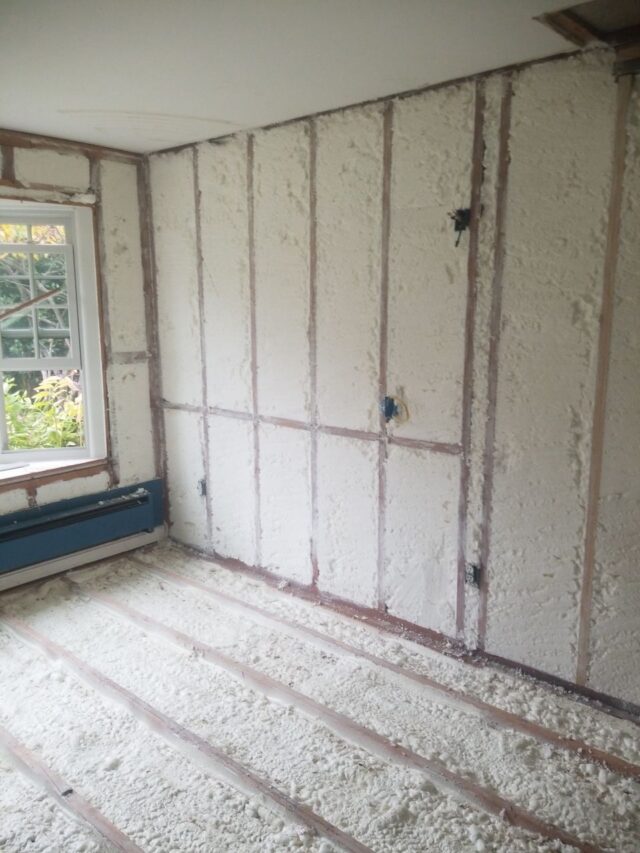 Think of insulation as a thermal blanket wrapped around your home, slowing the transfer of heat. If your home were your body, insulation is the cozy sweater that prevents heat transfer.
Think of insulation as a thermal blanket wrapped around your home, slowing the transfer of heat. If your home were your body, insulation is the cozy sweater that prevents heat transfer.
The effectiveness of insulation is measured by R-value. Higher R-values mean better resistance to heat transfer. Every new home in Maryland and Virginia is required to have a certain R-value of insulation installed during construction to meet state residential energy codes. These energy codes are based on the 2021 International Energy Conservation Code (IECC) that developed model energy codes based on each area’s climate zone.
Most of both Virginia and Maryland fall in climate zone 4. According to state energy codes, here’s how much insulation you need:
- Attics/Ceilings: R-49 in VA and up to R-60 in MD. (This translates to about 15–18+ inches of fiberglass in the attic)
- Walls: Around R-20
Key spots to insulate include your attic floors and slopes, exterior walls, crawlspaces, basements, and rim joists. For best results, your home should be insulated from the roof all the way down to the foundation.
Why It Matters
Proper insulation keeps your indoor temperatures steady, so your HVAC system doesn’t have to work overtime. ENERGY STAR estimates that upgrading your insulation and sealing leaks can cut your heating and cooling costs by about 15%. Plus, it makes your home quieter, adds resale value, and just feels better to live in.
Keep in mind, by investing in excellent insulation now, you’re gifting yourself a home that will feel just as cozy on a blustery January night as it does on a steamy August afternoon.
Airtight Construction: Keeping the Outside Out with Air Sealing
While insulation slows heat transfer, air sealing stops the leaks. Air sealing closes tiny gaps around your windows, pipes, vents, and all the places where drafts sneak in and your air conditioning or heat sneak out. Many homeowners don’t realize that all those little gaps add up. In fact, they can equal the same air loss as leaving a window open all day, every day.
Why You Should Care
Air leaks are often the number one cause of wasted energy in homes. Yet sealing them is one of the cheapest, most effective ways to improve your home. And air sealing and insulation are the perfect pair. Think of it this way: insulation is like a fuzzy sweater that keeps you warm when the air is still on a windy day, but air sealing is the windbreaker that keeps the breeze away. Together, they create a strong thermal envelope that keeps your house consistently comfortable.
Where to Seal
When air sealing focus on these most common sources of air leaks:
- Windows and doors: Use caulk and weather-stripping around frames.
- Attics: Seal around pipes, lights, and wiring.
- Basements and crawlspaces: Seal rim joists, sill plates, and utility openings.
Tested and Verified
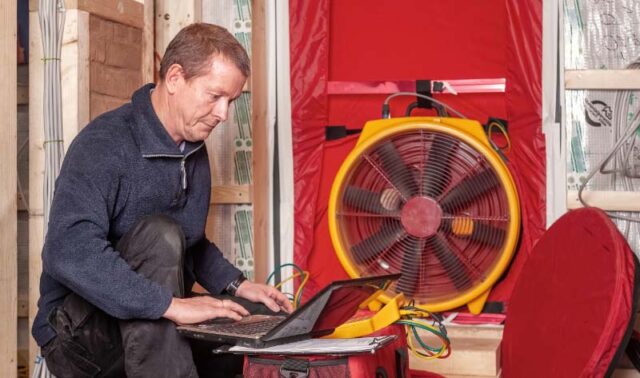
With advanced air sealing, your new home will feel as solid and snug as a Yeti cooler. You and your family will enjoy fewer cold drafts and hot spots in rooms, better indoor air quality, and protection from rot and mold to your home’s structure.
Inspiring the Vision: Comfort and Savings for the Long Haul with a Well-Insulated and Sealed Home
Imagine for a moment it’s a snowy February day outside, but inside your home it’s toasty and warm. Now it’s a hot, humid day in July, but your living room is refreshingly cool, and your air conditioning isn’t running 24/7. That’s the power of a tightly sealed, energy-efficient home.
Lower energy bills mean more money in your pocket every year. Since heating and cooling are the biggest energy costs in your home, reducing those costs is like giving yourself a raise. Plus, you’re protected against rising utility rates.
There are also federal tax credits and utility rebates available for building an energy-efficient home that you may qualify for. And don’t forget a well-sealed, well-insulated home uses less energy, cuts emissions, and supports Maryland and Virginia’s statewide energy efficiency goals.
Resale Value Boost
If you decide to sell your home in the future, ENERGY STAR certified homes often sell faster and for more money. Good insulation and proven airtightness are strong selling points, so keep the paperwork as part of your home’s quality records.
Building a new home is a rare opportunity to get everything just right behind the walls. By prioritizing top-notch insulation and air sealing now, you’re not just building a house, you’re building a legacy of comfort, efficiency, and smart living.
How to Talk to Your Builder (Without Getting Technical)
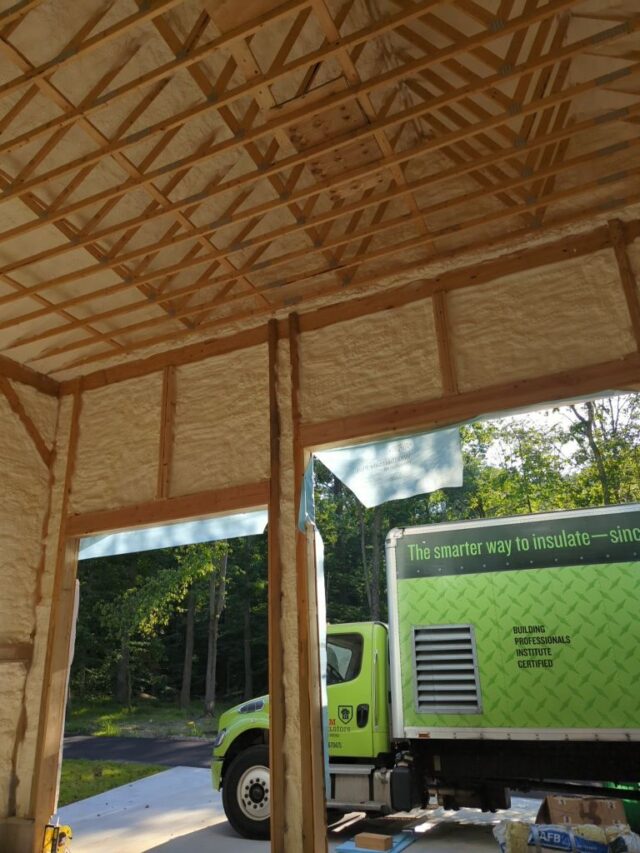
- “What R-value are we using for the attic and walls? How does that compare to code?”
- “Will you be doing a blower door test? What air leakage rate do you typically achieve?”
- “Can we add extra sealing around windows, doors, and at the attic plane to stop drafts?”
Don’t be afraid to keep it simple:
- Express goals: “I want the house to be very energy efficient and free of drafts.”
- Ask for explanations: “In plain English, will this insulation keep my family comfortable and lower our energy bills?”
- Use analogies in conversation: “Without sealing, insulation is like wearing a sweater in the wind without a windbreaker. It’s not very effective.”
A good builder will be happy to explain things clearly. If they can’t—or won’t—that’s a red flag.
We’re Here to Help You Build Smarter
If you’re building a new home in Maryland or Virginia, don’t just focus on what’s visible. Look behind the walls. Prioritize insulation and air sealing to build a house that’s efficient, healthy, and built to last. You’ll save energy, save money, and live in comfort, in every season, for years to come.
Count on Foam InSEALators to provide tailored insulation and air sealing solutions for your new Maryland or Virginia home. Our experienced team has been partnering with builders and homeowners throughout Maryland and Northern Virginia since 1994 and we’re here to help you build an energy-efficient home you’ll love. Contact us today to learn more about our insulation products and services for your new home.
____________________________________________________________________________________
References
Energy Star. (n.d.). Adding attic insulation. https://www.energystar.gov/saveathome/seal_insulate/do-it-yourself-guide/adding-attic-insulation#:~:text=How%20Much%20Should%20I%20Add%3F
Energy Star. (n.d.). Air sealing guide for contractors. https://www.energystar.gov/sites/default/files/asset/document/DOE_Air%20Sealing%20Guide%20for%20Contractos.pdf#:~:text=out%20the%20window%20to%20pay,some%20things%20you%20should%20consider
Energy Star. (n.d.). Seal and insulate methodology. https://www.energystar.gov/saveathome/seal_insulate/methodology#:~:text=EPA%20estimates%20that%20homeowners%20can,work%20for%20more%20than%2020
Insulation Institute. (n.d.). Value and savings. https://insulationinstitute.org/im-a-homeowner/why-insulate/value-savings/#:~:text=Savings%20,their%20homes%20and%20adding
Maryland Energy Administration. (n.d.). Your home and the energy code. https://energy.maryland.gov/documents/yourhomeandtheenergycode.pdf#:~:text=you%20may%20be%20required%20to,provider%20has%20been%20accepted%20by
University of Maryland Extension. (n.d.). Understanding home energy. https://extension.umd.edu/resource/understanding-home-energy#:~:text=Heating%20and%20cooling%C2%A0demands%20depend%20on,HVAC%2C%20water
U.S. Department of Energy. (n.d.). Air sealing your home. https://www.energy.gov/energysaver/air-sealing-your-home#:~:text=Reducing%20the%20amount%20of%20air,as%20doors%20and%20operable%20windows
U.S. Department of Energy. (n.d.). Where to insulate in the home. https://www.energy.gov/energysaver/where-insulate-home#:~:text=For%20optimal%20energy%20efficiency%2C%20your,the%20illustration%20are%20as%20follows
Virginia Tech Cooperative Extension. (n.d.). Weatherization tips. https://www.pubs.ext.vt.edu/2908/2908-9017/2908-9017.html#:~:text=The%20greatest%20source%20of%20wasted,wouldn%E2%80%99t%20you%20want%20it%20fixed
